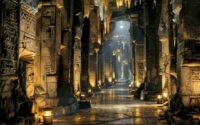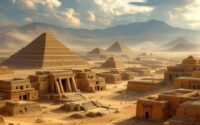Is There a Hidden Chamber in the Great Pyramid?
The Great Pyramid of Giza has long been a subject of intrigue, with whispers of hidden chambers beneath its monumental stone. Recent advancements, like muon tomography, have disclosed potential voids that could harbor secrets from ancient Egypt. Researchers are now questioning if these unexplored spaces hold artifacts that reveal more about burial practices and construction methods. As investigations progress, the possibility of newfound knowledge grows, leaving one to wonder what truly lies within this enigmatic structure.
Introduction
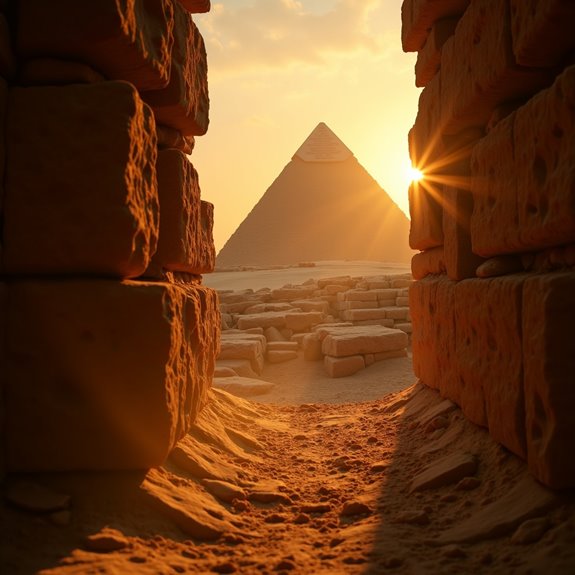
The Great Pyramid of Giza, an enduring symbol of ancient engineering, has long fascinated historians and archaeologists alike. This monumental structure, built around 2560 BCE, stands as a reflection of the ingenuity and ambition of the ancient Egyptians. Recent discoveries hint at the possibility of hidden chambers within its massive stone framework, igniting further interest in its mysteries. Researchers have employed advanced scanning techniques to explore unseen areas, suggesting the potential for undiscovered artifacts and clues about its construction. Despite extensive studies, the pyramid still holds secrets that challenge our understanding of ancient society and architecture. As investigations continue, the world keenly awaits any revelations that could deepen historical knowledge and shed light on the enigmatic structure’s true purpose.
Ancient Egyptian Burial Practices
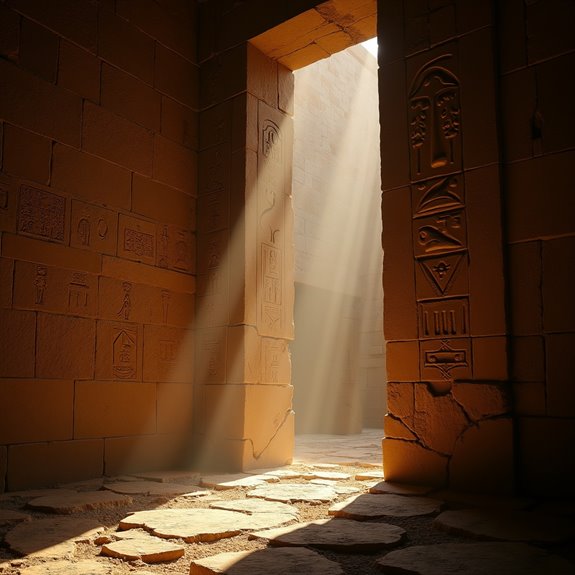
Mummified bodies, carefully preserved for eternity, reveal much about ancient Egyptian burial practices. These practices reflected their beliefs in the afterlife and the importance of preserving the body for the journey beyond. Families invested considerable resources in elaborate tombs, filled with artifacts meant to aid the deceased in the afterlife. Burial sites often featured offerings, food, and sacred items, tailored to the individual’s status and wealth. Tombs were adorned with intricate hieroglyphs, depicting scenes of daily life and gods, intended to protect and guide the mummified from potential threats. Additionally, rituals such as the opening of the mouth ceremony signified the deceased’s rebirth and connection with the divine. Through these customs, the Egyptians aimed to guarantee immortality and spiritual continuity.
Notable Cases or Sightings
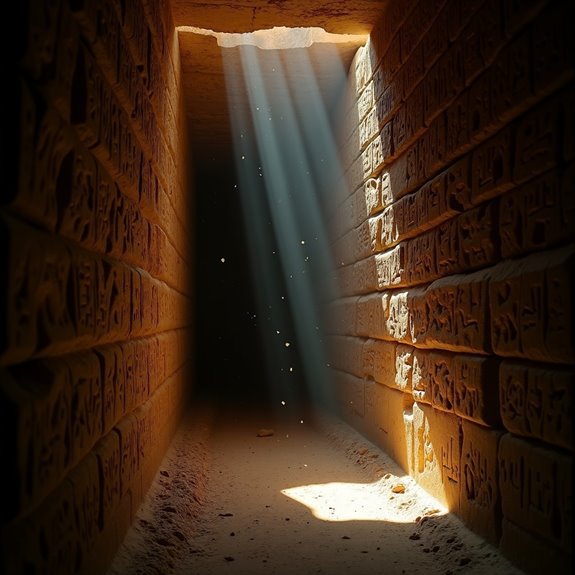
Many intriguing discoveries have come to light surrounding the Great Pyramid of Giza, particularly regarding hidden chambers and their significance. In 2017, scientists using muon tomography detected a void above the Grand Gallery, sparking enthusiasm in the archaeological community. This non-invasive technique revealed anomalies, suggesting a concealed space that could be pivotal to understanding the pyramid’s construction. Similarly, in 2018, a team used advanced scanning methods to identify a hidden corridor near the north face of the pyramid, reinforcing theories about undiscovered chambers. Sightings and anomalies have continued to fuel speculation, with researchers keen to explore these new findings further. Each instance adds layers of mystery, keeping the Great Pyramid a focal point in the study of ancient Egyptian architecture.
Common Theories or Explanations
While curiosity about the Great Pyramid’s hidden chambers thrives, researchers have proposed several theories to explain their existence. One popular theory suggests that these chambers served as storage areas for ceremonial items or treasures, intended for the afterlife. Another belief posits that the chambers played a key role in the pyramid’s construction, aiding the movement of massive stones. Some theories even suggest astronomical alignments, indicating that these hidden spaces correspond to celestial bodies’ positions. An advanced ventilation system is also a possibility, allowing air circulation to maintain ideal conditions. Finally, some researchers speculate these chambers could reveal insights into ancient Egyptian engineering, enhancing our understanding of their architectural prowess. Each theory reflects humanity’s insatiable quest to unravel the pyramid’s mysteries.
Frequently Asked Questions
What Tools Are Used for Scanning the Great Pyramid?
Researchers use ground-penetrating radar, thermal imaging cameras, and cosmic ray muon tomography to scan the Great Pyramid. These advanced tools help them uncover potential voids and structural anomalies without damaging the ancient monument.
How Can Scientists Determine the Chamber’s Existence?
Scientists use advanced scanning techniques, like cosmic-ray muon tomography and ground-penetrating radar, to detect anomalies in the pyramid’s structure. They analyze data patterns that suggest hidden chambers, revealing insights about the ancient monument’s construction.
Have Any Artifacts Been Found in Potential Hidden Chambers?
No artifacts have been found in potential hidden chambers within the Great Pyramid. Researchers continue using advanced techniques to explore and analyze the structure, hoping to uncover secrets and historical treasures yet undiscovered.
How Does the Pyramid’s Construction Affect Potential Chambers?
The pyramid’s construction, with its precise alignment and immense weight, challenges the existence of hidden chambers. Engineers believe any potential chambers must bear the structural load and remain undetected within the stone’s intricate layout.
What Are the Risks of Exploring Hidden Areas in the Pyramid?
Exploring hidden areas in the pyramid carries risks like structural collapses, toxic gases, and entrapment. Explorers must navigate tight spaces cautiously, as unseen dangers lurk, threatening their safety and the integrity of this ancient monument.
